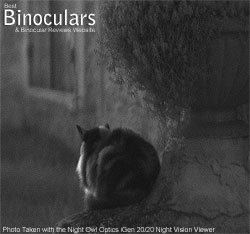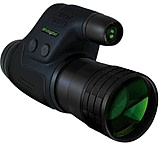

To help with this, under the device and on the battery compartment cover is a large thumb indent that does a good job of encouraging you to hold it correctly with one hand at this point, taking most of the weight.
#Night owl optics digital night vision viewer how to
When I first took it out of the box, my initial reaction was to hold it sideways, however once you get the idea of how to hold it, it is really very comfortable and well balanced. The iGen Night Vision Viewer is essentially a monocular, but it's styling is quite different to most standard NV monoculars as it has a far flatter profile (it is wider than it is tall). 1 - Night Owl Optics iGen 20/20 Night Vision Viewer This version is able to capture images and store them on a memory card that fits into a slot under the body.įig.

There are two models of the iGen 20/20, the NOIGM3X and the NOIGM3X-IC that I tested for this review. Gain Control to adjust sensitivity to lightīefore we get into the performance and image quality, I first wanted to take a look at the body, it's design and go over what goes where.Control Exposure with adjustable frame rate (2 fps to 30fps).Adjustable Light Amplification from 300x to 10000x.Digital Night Visionīut there is another way, the Night Owl Optics iGen 20/20 Night Vision Viewer uses a form of digital night vision to amplify the available collected light and display it on a screen which you look at through the eyepiece as you would on any standard night vision monocular.ĭigital Night Vision and in particular the iGen technology developed by Night Owl Optics which they call their tubeless night vision technology is said to have a number of advantages, which I will take a look at in detail in this review and see if it is as good as they say it is. Sounds complicated and I guess it is, but this is the way most standard night vision devices work, be that an entry level Gen.1 monocular or a very high end Gen.3 night vision binocular. Up until now, all the night vision devices that I have used, tested and written reviews about have all used intensifier tubes that take the collected light energy from the objective lens in the form of photons, converts them into electrons, amplifies or multiplies them and then sends them flying onto a phosphor screen that changes them back into visible light.


 0 kommentar(er)
0 kommentar(er)
